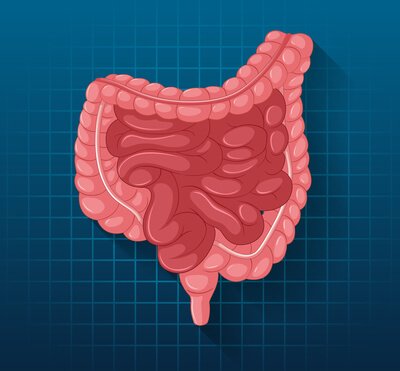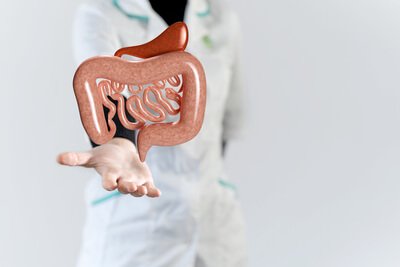Table of Contents
ToggleWhat is Intestinal Knotting? What are the symptoms?
Index
What is Intestinal Knotting?
What Are the Types of Intestinal Knotting?
What Causes Intestinal Knotting?
What Are the Symptoms of Intestinal Knotting?
Intestinal Knot Diagnosis
Bowel Knot Treatment
Bowel Knot Complications
Intestinal knotting is intestinal obstruction as a result of the bending of a part of the large or small intestine around itself or around the mesentery (the membrane that feeds the intestines). Intestinal obstruction can lead to serious complications. This condition can also cause tissue death in the intestine due to the obstruction of blood flow to the intestine itself. Intestinal knotting is an emergency that requires prompt diagnosis and treatment. What is intestinal knotting? And what causes intestinal knotting? You can find more comprehensive answers to these questions in our article below.
What is Intestinal Knotting?
A volvulus (intestinal knot) can occur when the large intestine or part of the small intestine is twisted. The bent part may block the blood vessels leading to the intestine and prevent the intestine from being fed. Volvulus is an emergency that requires surgical intervention. If the necessary treatment is not administered quickly, this can result in the death of tissues in the knotted part of the intestine. Volvulus occurring in the small intestine can usually be seen in infants and children. Colon (large intestine) knotting can be seen rather than small bowel knotting in adults.
What Are the Types of Intestinal Knotting?
There are multiple types of intestinal knotting, and each type has its own characteristics. We can list the types of intestinal knotting as follows:
Cecal volvulus: Known as cecal volvulus, this condition is one of the rare types of intestinal knotting. In this type of knotting, the cecum between the small intestine and the colon separates from the abdominal wall and rotates around itself. With the help of imaging, it can be quickly diagnosed and successfully treated.
Sigmoid colon volvulus: The last part of the intestine, that is, the part that connects to the rectum, is called the sigmoid colon. The sigmoid colon contains a lot of muscle tissue and these muscle bundles are arranged in an up-down or circular fashion. The sigmoid colon can rotate around itself or around the protective membrane for various reasons. This can prevent the outflow of gas and feces. It is the most common type of intestinal knotting.
Transverse colon volvulus: This type of intestinal knotting can usually be seen in the elderly. It takes place in the middle part of the intestine. The cause of this condition may be the presence of a long or narrow mesentery or chronic constipation. This very rare type of knotting may be similar to knotting in the sigmoid colon.

What Causes Intestinal Knotting?
Bowel knotting can result from a birth defect that is commonly associated with misalignment of the bowel during fetal development. This is called malrotation. Since the intestines do not have a normal connection to the abdominal wall, the intestines may slide or turn from their proper position in the abdomen. Intestinal knotting due to malrotation can usually manifest itself in the early stages of life, within 1 to 2 years. Intestinal knotting can be seen more frequently in older individuals. Also, having too few or too many bowel movements can lead to intestinal knotting. Intestinal entanglement can generally develop for more than one reason. These reasons can be listed as follows:
Enlargement of the intestines
Abdominal adhesions that develop after surgery or infection
Intestines independent of the abdominal wall
chronic constipation
Pregnancy
Hirschsprung’s disease: It is known as congenital enlargement of the large intestine. It develops due to the inability of the lower rectum to remove stool from the anus.
Apart from these situations, intestinal entanglement can be seen more frequently in male individuals, individuals over 60 years of age, and individuals living in nursing home-style places. Intestinal knotting can generally occur due to another underlying health problem or a physical problem. However, volvulus can develop without any reason.
What Are the Symptoms of Intestinal Knotting?
Volvulus symptoms can occur suddenly and severely. Therefore, individuals can apply directly to the emergency room. Intestinal knotting symptoms may generally present with abdominal bloating and vomiting of green bile. However, the symptoms may also vary according to the region of intestinal rotation. Volvulus can cause severe pain and pressure in the intestinal wall as a result of gas and fluid accumulation in the blocked intestinal part. Intestinal knotting symptoms can be listed as follows:
Abdominal pain and tenderness
nausea and vomiting
bloated belly
bloody stool
Constipation
Palpable mass on abdominal examination
The symptoms of intestinal knotting in infants may differ slightly from those in adults. Infants may experience the following symptoms along with these symptoms:
sudden crying spells
Mobility in the legs as if in pain
Lethargy (drowsiness with slowing of life function)
rapid heartbeat and breathing
Intestinal Knot Diagnosis
If the individual has signs of intestinal knotting, the doctor first takes a comprehensive history from the patient. He or she can then review his medical history by performing a physical exam. Diagnosing volvulus may generally require x-rays or imaging. Doctors can often look for a coffee bean shape or a bent inner tube shape in these images. The enema method can also be used to make the imaging clearer and more understandable. However, computed tomography, ultrasound, or colonoscopy can also be used to diagnose intestinal knotting. The following methods can generally be used to diagnose intestinal knotting:
blood tests
Tests to examine blood in the stool
Barium X-rays to examine the upper or lower abdomen
sigmoidoscopy
Bowel Knot Treatment
Intestinal knotting requires prompt treatment. Treatment is generally applied to open the intestine and the resulting obstruction. Surgery may be required to correct the intestinal knot. However, if surgery is not sufficient, surgical treatment may be required. However, in some cases, this problem can be controlled without the need for surgery. In nodes that occur in the intestines, doctors can first restore the intestine using an imaging system called sigmoidoscopy. The sigmoidoscopy procedure uses a thin tube inserted through the rectum. The rotating part of the large intestine can be opened by injecting air into the tube, which is advanced towards the rotating regions of the large intestine. However, intestinal nodes corrected with this method may recur after a while. In such cases, surgical procedures may be required for a permanent solution. During intestinal knotting surgery, the doctor can open the knot by making an incision in the abdominal wall near the bent part of the intestine. It can then restore blood flow to areas where blood flow is not lost due to intestinal kinking. If blood flow could not be provided for a long time due to obstruction to the intestinal sections and a part of the intestine has died, that part of the intestine can be surgically removed. The ends of the intestines are then stitched together. However, in some cases, surgery may have to remove a large part of the intestine, as there are many parts of the intestine that have died. As a result, it may become impossible to sew the ends of the intestines together. In such a case, the surgeon can connect the ends of the intestines to openings in the abdominal wall known as stomata. Individuals with stoma can meet their stool needs by using colostomy bags. However, this may be permanent or temporary. Early diagnosis and prompt treatment of intestinal knotting can usually yield good results.
Bowel Knot Complications
This condition requires urgent treatment in order to minimize the complications that may develop as a result of intestinal knotting. Complications that may occur as a result of intestinal knotting can be listed as follows:
Sepsis (blood infection)
Short bowel syndrome (malabsorption disorder) that develops with the removal of a large part of the intestine due to tissue death
Secondary peritonitis (abdominal infection)
Intestinal knotting can lead to serious and irreversible consequences if left untreated. Early diagnosis can be very effective in intestinal knotting and the treatment applied can give more effective results. When you feel the symptoms of intestinal knotting, you can consult your doctor without wasting time.
